From Kasos we headed to the wild anchorages of Karpathos and Alimia.
Tristomo, Karpathos
With decent winds forecast to blow us across the Karpathos Channel on Sunday, we needed to first make the jump up to Tristomo. The sea had barely a ripple in the light westerly winds and it was an uneventful motor up to the long, almost land locked inlet at the top of Karpathos. There is at least 8m of water in the narrow, southern entrance and as we turned in, the water became a beautiful cobalt blue.
Heading down to the head of the bay, the inlet reminded me of a Scottish loch. Is there an equivalent to a loch in Greek? A cluster of ruins and newer houses curved around the head and we found good holding in 7.5m.
There isn’t any internet or phone coverage at Tristomo; it was nice to be free of the temptations of the internet for a while.
Exploring Ashore
As we anchored I spied a walking signpost ashore so once we were safe and sorted I rowed ashore for an investigate.
Argh – I soon discovered that open sandals were a bad shoe choice! Within a few meters of following the path to Agios Ekaterina my feet had been attacked several times by the evil spiky bushes that were growing everywhere. The ground was stony and the red dots marking the route had disappeared so after being spiked so many times that plugging onwards was no longer fun, I turned around in hope of a better track around the other side.
While walking back around the head of the bay I had to walk over a graveyard of rubbish. Plastic bottles and packaging, odd shoes and fishing debris had all washed up and covered a wide area. It was horrible to see in such a wild and beautiful place. Furthermore, in the corner of the loch there were piles of dead fish bits, stinking and buzzing with flies. Yuck!
The Foliage is Out to Get Me
Past all of that I came to another footpath sign, this one pointing up the hill to Diafani, so on up I went. Ouch, ouch, ouch! Flipping spiky things again. There was no obvious track and the only red dots I saw were a few red poppies. Turning around again I hoped for third time lucky with the path to Avlona. And yes, this time a narrow but distinct path running along the water’s edge and free from the spiky monsters. After a while it curved upwards giving lovely views over the anchorage.
The hill sides had a much more barren and rocky theme to them than Kasos. No blooms of wildflowers, mostly spiky plants with gorse providing splashes of yellow. A few red poppies, most other flowers were sparse and tiny, but it is impressive where life manages to grow, such as the lilac flower in the top middle picture above. I did spot some more Dragon Arums, these ones definitely had a stink to them.
Alimia
The next day the wind was blowing from the east rather than the forecast southerlies. Perhaps the forecast had changed since we’d got our last update on our way up Karpathos yesterday. Easterly wouldn’t be very good at all for our route to Chalki but we took a chance and motored on out where it was still easterly and blowing a F7 through the gap between Karpathos and Saria. We managed to find a weak internet signal for an updated forecast which showed southerlies in the Karpathos channel. Perhaps the southerly winds get bent around the high peaks of Karpathos.
And once around the top of the island, southerlies is what we got, varying between F4 and F6 as we crossed, another good passage sailed. Unfortunately the southerly swell was rolling into the bay at Chalki so we pushed on for better shelter at the next door island of Alimia. Once inside the lagoon entrance the sea became flat calm and the wind disappeared.
The next day after some morning cloud had fizzled away, we rowed ashore for an explore. Alimia is uninhabited but there are a few buildings ashore where German soldiers were stationed in WWII. Inside the falling down buildings can be seen cartoons and sketches done by the soldiers along with additions by more recent visitors.
Exploring Alimia
We followed a rough path that led us between juniper bushes and small pine trees. The island was very dry and the abundant flowers of Kasos were non-existent here. What plant life there was tried to attack us too. We received scratches from the bushes and after passing through clumps of waving, wheat like grasses we’d subsequently end up with sharp, spear like spikes stuck in our shoes and socks. There were no birds and the only goats we saw were two long dead ones in the buildings. The only animal life we saw was a Starred Agama lizard sunning itself and the evidence of plenty of spiders from the strands of webs joining the bushes we passed through (but thankfully no actual eight legged beasties).
We found ourselves high up overlooking more old buildings so followed a wall downwards to find what looked like army barracks and a church in need of some love. Further around the bay were more houses so we set off along a shore side track to investigate further. There we found a sign of life – someone had lit a candle in the church. This church looked in better condition than the first one but the surrounding houses all looked un-lived-in. We walked back along the foreshore, hopping and picking our way across the rocks.
Sailing Info
29th April: Kasos to Tristomo, Karpathos – 30nm travelled
Winds light from the south
Anchored in 7m in position 35 49.307’N 27 13.25’E Good holding
No facilities ashore other than bins organised into different recycling types.
30th April: Tristomo to Alimia – 40nm travelled (28nm sailed)
Winds from the SE F4 to F5. Some stronger F6 gusts for a period. Winds were up and down.
Anchored in position 36 15.31’N 27 42.07’E in hard sand.
No amenities ashore.


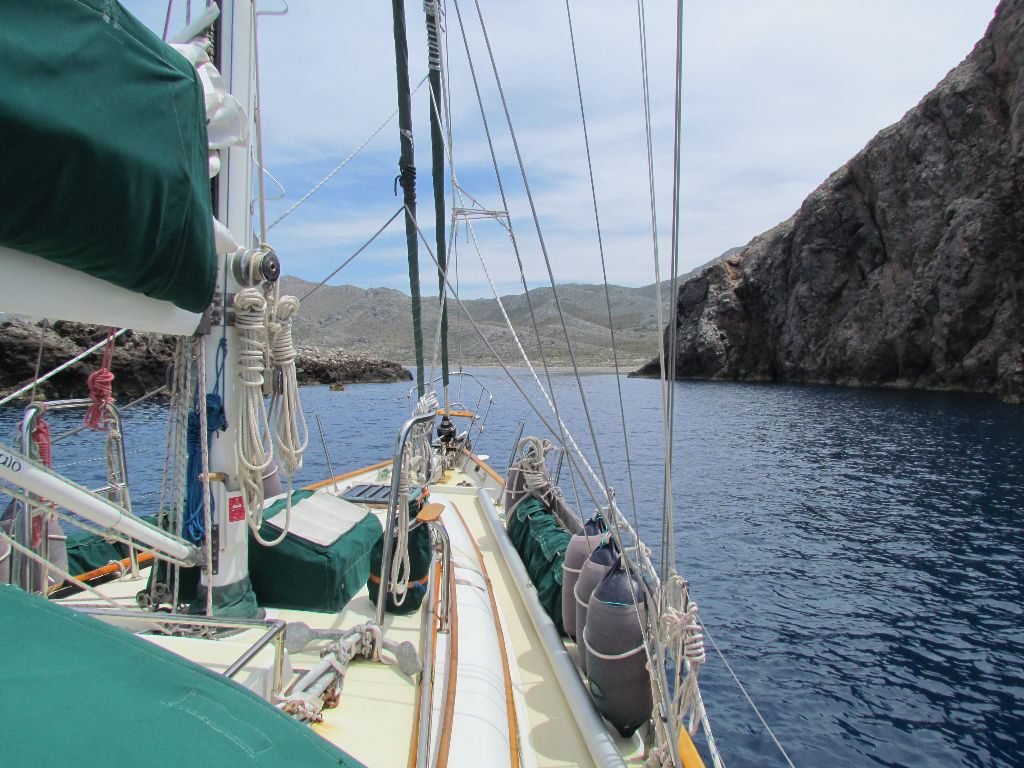
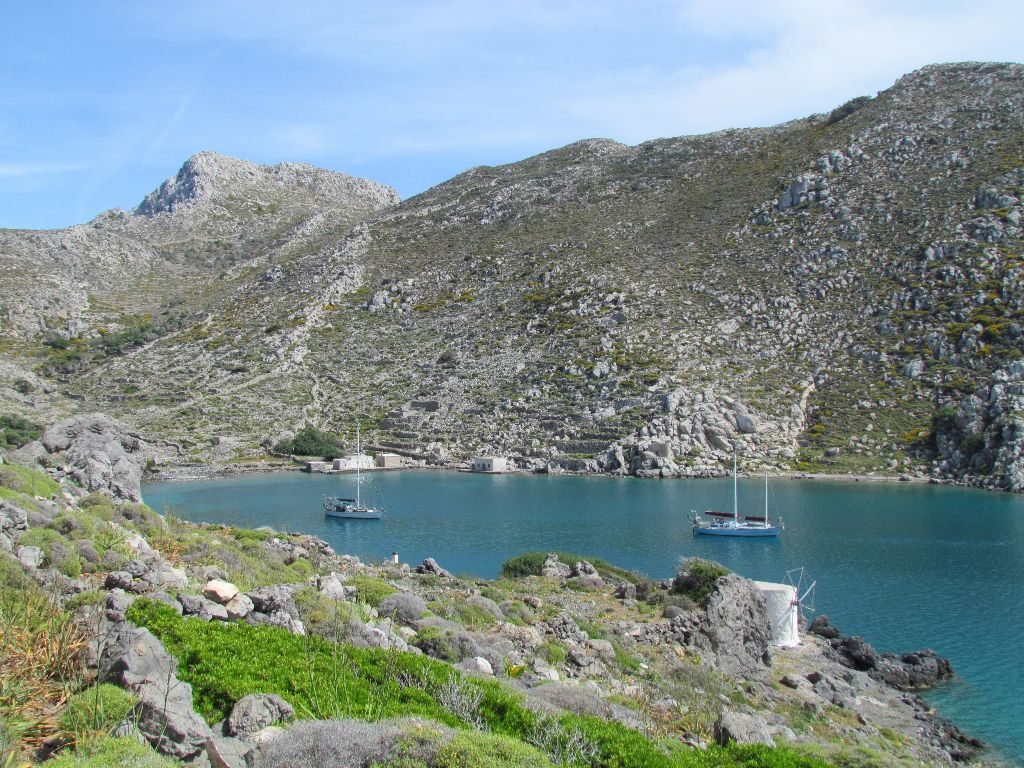
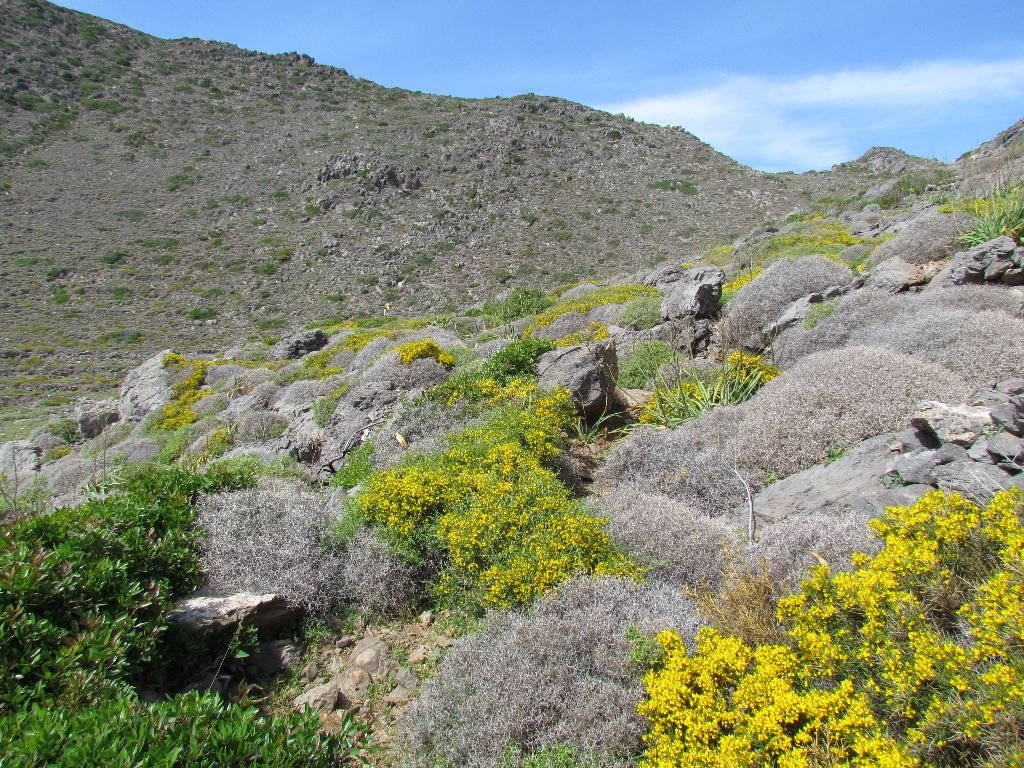
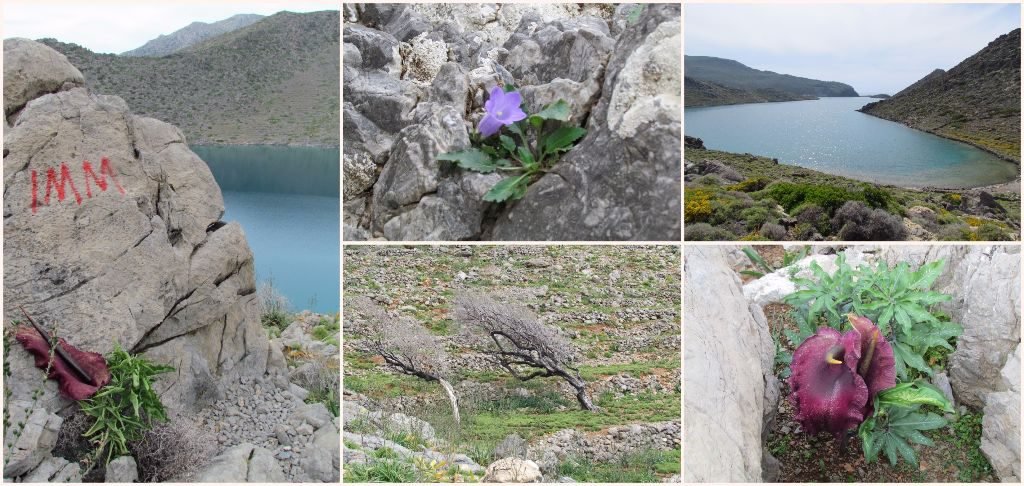
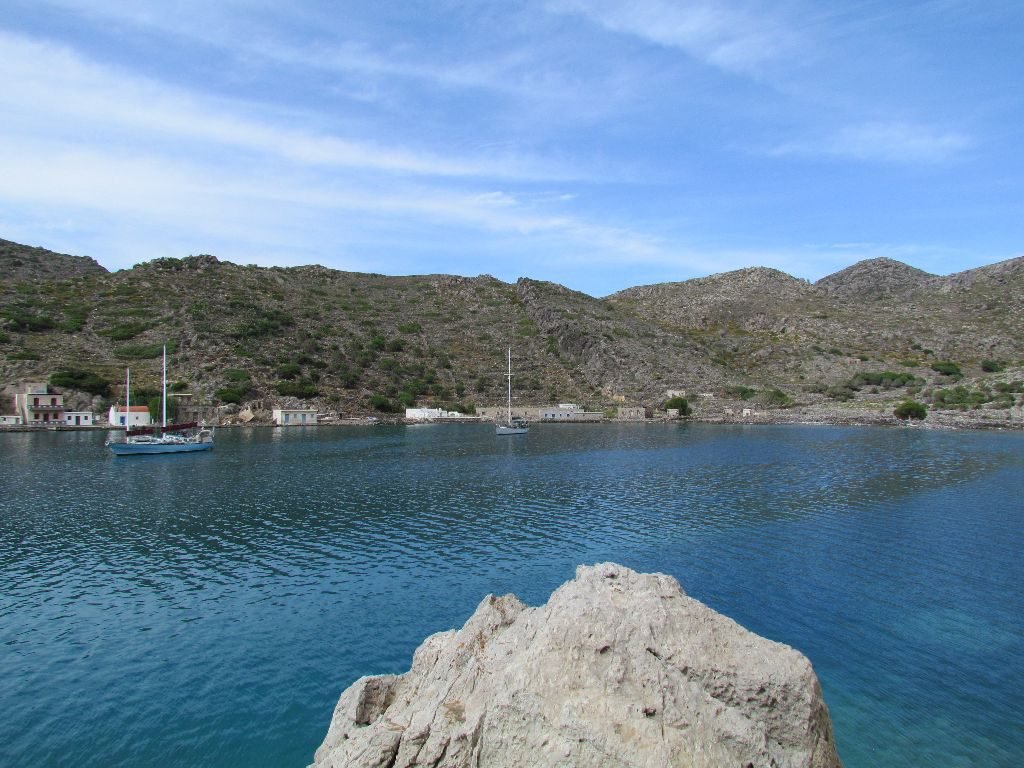
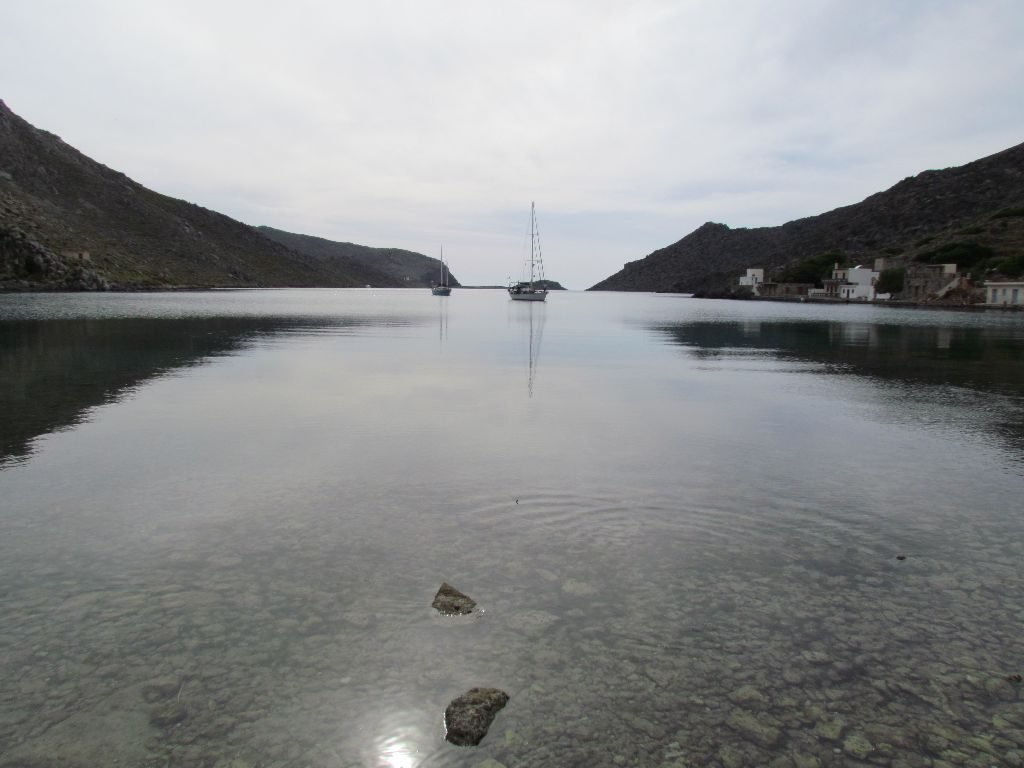
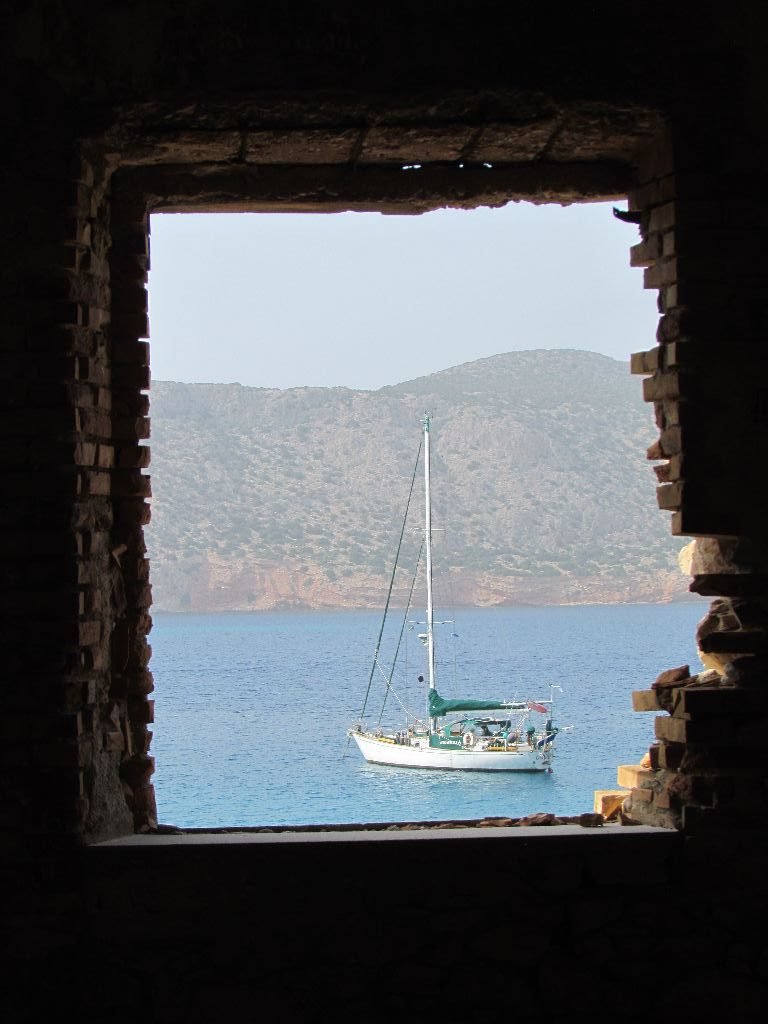
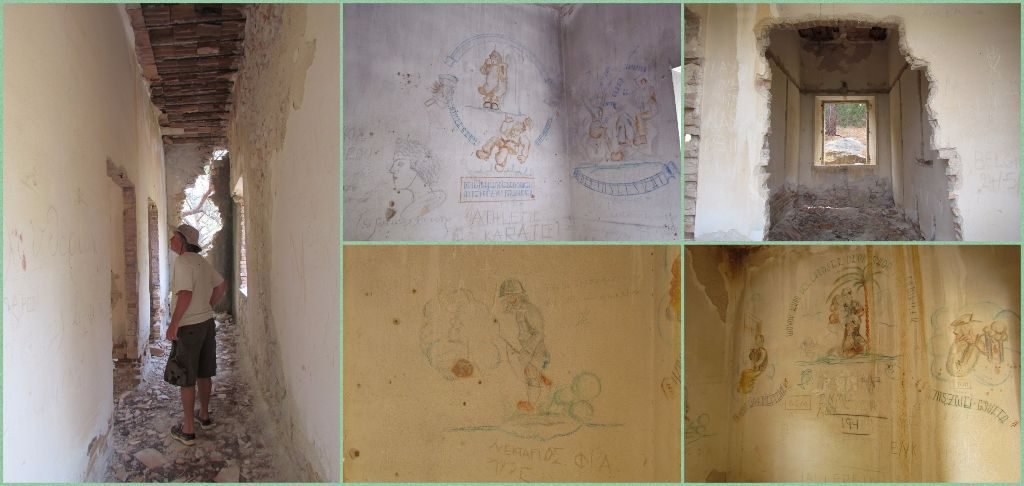
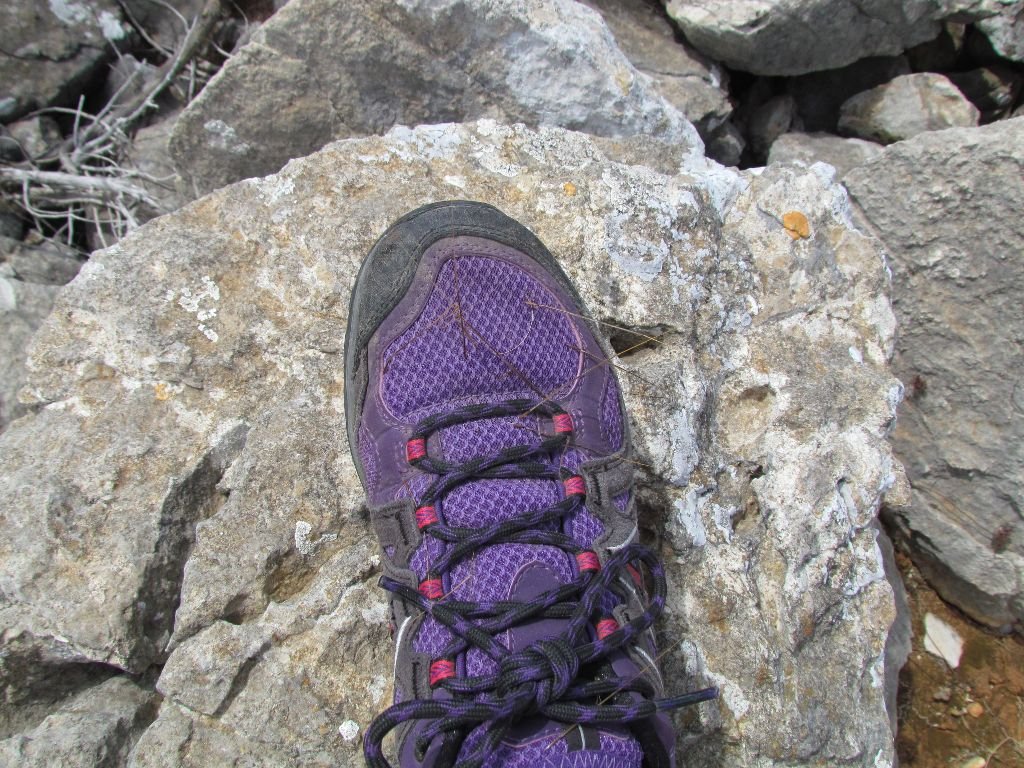
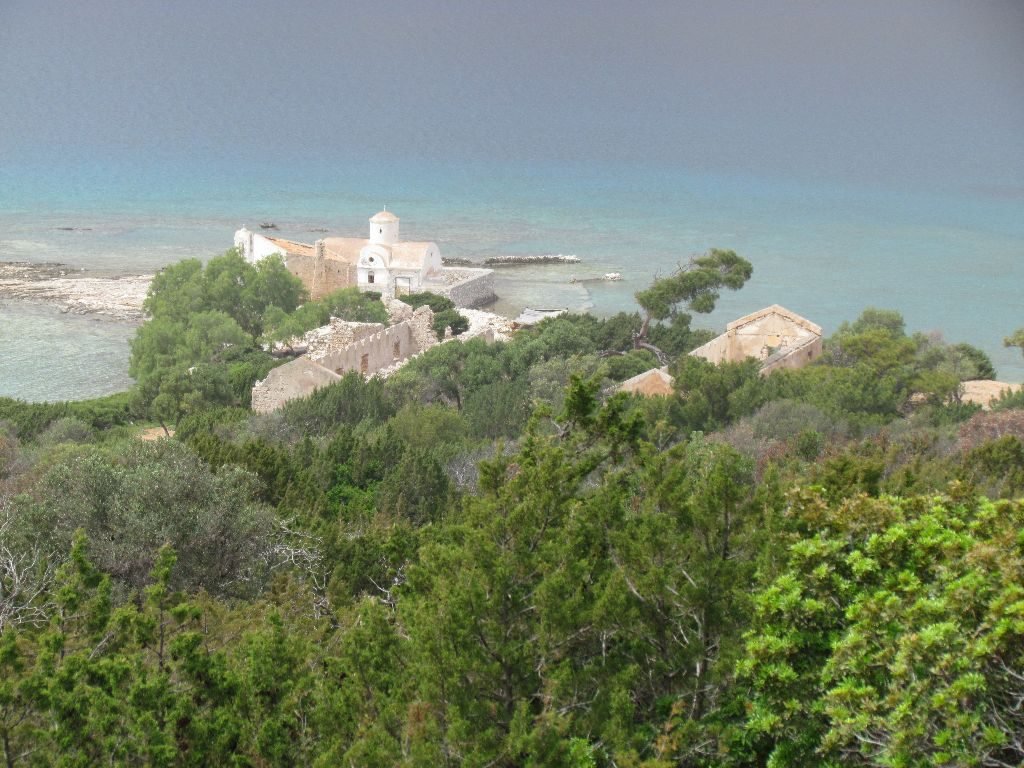
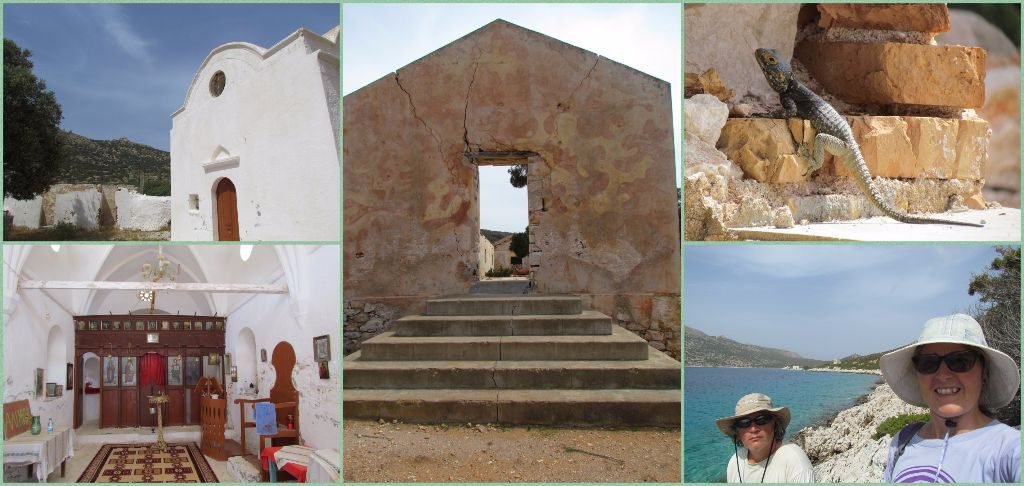
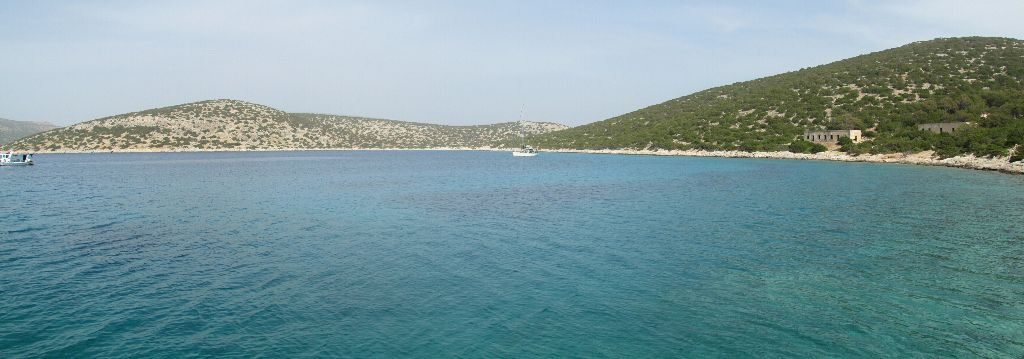
Wonderful story and photographs yet again. Just don’t let Colin write it.
The red dots you were following on Karpathos were others who had decided to walk in sandals leaving trails of blood.
I bet Colin could not get over the German versions of “Bankies”. Real living history and I am sure if he could have put one on Emeralds bulkhead he would have done.
Wonderful blog again Nicola and the photos just get better.
Safe sailing my friends.